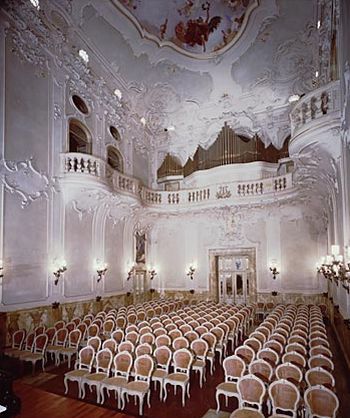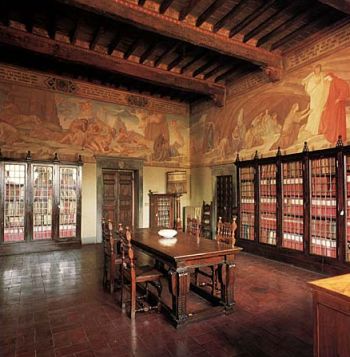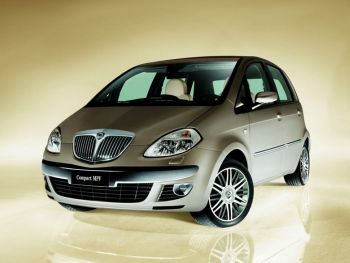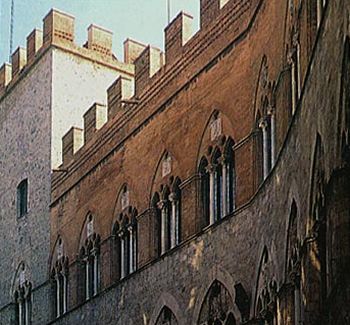|
Lancia is to be
the main sponsor as the famous Palazzo Chigi Saracini, in
the heart of Siena, fully opens its doors to the public for
the first time in 200 years.
This 'fairytale'
castle, which is situated right in the heart of the
cosmopolitan city, is home to a famous music school as well
as a huge and valuable art collection, which numbers more
than 12,000 items.
The public
viewing, which is sponsored by Lancia, will run until the
15th June, while within the beautiful castle grounds will be
displayed a new Lancia Musa. Much as Siena sees itself as a
hospitable, International city, and the Palazzo Chigi
Saracini is regarded as an institution that sums up
everything that Italy stands for: style, taste and a warm,
welcoming atmosphere, so too Lancia believe that the Musa,
also reflects these core values, and that presenting the
Musa at the Palazzo in Siena is a logical step forward.
The Palazzo
Chigi Saracini
The palace that
currently houses the Accademia Musicale Chigiana has a long,
composite history.
Towards the
middle of the twelfth century the noble Marescotti family
built the tower that still stands at one end of the
building; their emblem, an eagle with spread wings,
overlooks the three-mullioned windows of the façade even
now.
In 1506 the
palace was purchased by one of the most important families
of Siena, the Piccolomini Mandòli family, who undertook
considerable modifications in its structure as well as in
its decoration. The palace was thus given the Renaissance
aspect that it continues to conserve in some parts, such as
the courtyard and the upstairs loggia.
During 1770 the
palace became the property of Marcantonio Saracini, and his
brother Bernardino, who began an important restructuring
process brought to an end in 1824 by his son Galgano. The
façade, although maintaining its original Gothic style, was
considerably enlarged, stretching along the curve of the
street; the interior was modernized, even if only partially,
by Agostino Fantastici. He also designed the furnishings of
a sumptuous bedroom. It was in this period that the palace
was enriched with its imposing art collection. In 1877 the
Saracini family died out and the Chigi family, another one
of the most important in Siena, inherited the palace,
together with the entire estate and the Saracini family
name. Fabio, the first of the new owners, died in 1907
during a hunting accident, leaving his nephew Guido as
universal heir.
|
 |
|
Count Guido Chigi Saracini commissioned architect
Arturo Viligiardi to restoration the Palazzo, an
undetaking which was to also include a new, rococo
style, concert hall |
|
 |
|
The Palazzo Chigi Saracini is home to a vast and
important collection of art, including 'Charity' by
Raffaello Vanni |
|
 |
|
The Accademia Musicale Chigiana houses a large
and historically important library, comprising of
70,000 volumes |
|
|
 |
|
The Palazzo Chigi Saracini is regarded as an
institution that sums up everything that Italy
stands for: style, taste and a warm, welcoming
atmosphere, and so to the Lancia Musa, which is an
MPV which also reflects these strong values |
|
 |
|
Situated right in the heart Siena, the Palazzo Chigi
Saracini is home to a famous music school and
valuable art collection |
|
|
It was Count Guido Chigi Saracini who commissioned the
architect Arturo Viligiardi with the restoration of the
building, which underwent a full-scale restructuring inside
and out (notably the rococo style concert hall), which
continues to characterize it today.
Count Guido was the last owner of Palazzo Chigi Saracini,
which was his residence. Upon his death in 1965, it passed
into the hands of the Accademia Musicale Chigiana
Foundation, founded by him, and to which it still belongs.
A vast and
important art collection
The Palazzo
Chigi Saracini, whose unmistakable form dominates the Via di
Città in Siena, contains within its splendid halls a vast
and important collection of works of art. They were gathered
over the centuries, particularly between the 18th and 19th
centuries by Galgano Saracini, a well-to-do enthusiast
belonging to the Sienese family, from whom the Chigi
descendants inherited the property at the end of the 19th
century.
The collection contains works by artists belonging to all of
the important periods of Italian painting, especially the
Sienese school: from the "primitives" of the 13th century to
the "purists" of the 19th century.
The names of
Sassetta, Sano di Pietro, Botticelli, Sodoma, Beccafumi,
Manetti, Vanni, Rosa, Cassioli, Maccari and others stand out
in particular. There is also a large number of sculptures
and of objects typically collected by aristocrats, such as
ivories, porcelain, chinoiserie, silver, etc. Of particular
importance is a large collection of ceramics from the most
important Italian schools from the 16th to the18th
centuries.
Accademia
Musicale Chigiana
The Literary
Library, which houses approximately 20,000 volumes, is made
up of printed volumes and manuscripts belonging to the Chigi
and Saracini families.
The Music Library,
approximately 35,000 volumes, is made up of piano and
orchestral scores and instrumental parts for the performance
of symphonic, chamber music and solo compositions,
autographs, manuscripts and opera librettos, as well as
texts on musicology. This section also contains a large
number of antique 'pieces' of considerable worth.
The Foundation
The Accademia Musicale Chigiana
was founded by
Count Guido Chigi Saracini in 1932
with the aim of organizing
Master Classes for the principal
musical instruments. Its founder, besides bestowing his
material goods and providing the magnificent palace which he
had restored and readapted for the purpose, was successful
in bringing to Siena a large number of world famous
musicians as Instructors of the various Classes. We need
only recall, among others, Pablo Casals, Antonio Guarnieri,
Alfredo Casella (Count Chigi Saracini's supporter at the
time of the creation of the Accademia Chigiana), Arrigo
Serato, Sergiu Celibidache, George Enescu, Andrés Segovia,
Alfred Cortot, Jacques Thibaud, Nathan Milstein, Yehudi
Menuhin, Hermann Scherchen, Guido Agosti, Gino Bechi, Gina
Cigna, André Navarra, Riccardo Brengola, followed after his
death by Franco Ferrara, Giorgio Favaretto, Goffredo
Petrassi and still others too numerous to mention here.
The quality of
the teaching staff has continued to be extremely high in
more recent times as well, with such artists as Carlo Maria
Giulini, Salvatore Accardo, Bruno Giuranna, Franco Petracchi,
Franco Donatoni, Kenneth Gilbert, Severino Gazzelloni,
Franco Gulli, Oscar Ghiglia and many others being called to
Siena as Instructors.
It would also be impossible now to forget that many of the
most well-known names in the field of international music
have emerged from the Classes in Siena, such as Carlo Maria
Giulini, Zubin Mehta, Daniel Oren, Roman Vlad, Nino Rota,
Claudio Abbado, Salvatore Accardo, Uto Ughi, Daniel
Barenboim and Alirio Diaz. |
|
![]()
![]()